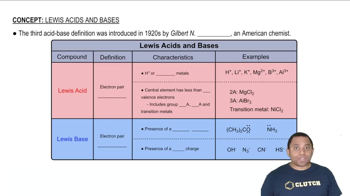Here are the essential concepts you must grasp in order to answer the question correctly.
Buffer Solutions
A buffer solution is a system that resists changes in pH upon the addition of small amounts of acid or base. It typically consists of a weak acid and its conjugate base, or a weak base and its conjugate acid. In this case, acetic acid (a weak acid) and sodium acetate (its conjugate base) form a buffer that helps maintain a stable pH when HBr is added.
Recommended video:
Henderson-Hasselbalch Equation
The Henderson-Hasselbalch equation is a mathematical formula used to calculate the pH of a buffer solution. It is expressed as pH = pKa + log([A-]/[HA]), where pKa is the negative logarithm of the acid dissociation constant, [A-] is the concentration of the conjugate base, and [HA] is the concentration of the weak acid. This equation is essential for determining the pH before and after the addition of HBr.
Recommended video:
Henderson-Hasselbalch Equation
Acid-Base Neutralization
Acid-base neutralization is a chemical reaction where an acid reacts with a base to produce water and a salt. In this scenario, the addition of HBr (a strong acid) to the buffer will react with the acetate ions from sodium acetate, reducing the concentration of the conjugate base and affecting the overall pH. Understanding this concept is crucial for predicting how the buffer will respond to the added acid.
Recommended video:
 Verified step by step guidance
Verified step by step guidance


